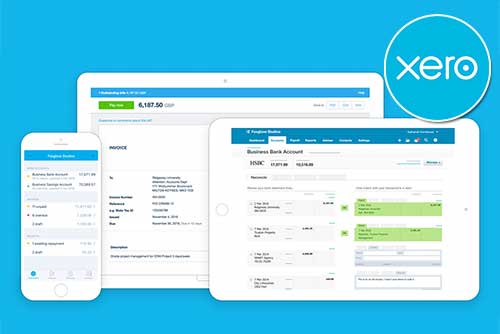Understanding Accounts Receivable
Accounts receivable (AR) is a critical component of a company’s financial structure, yet it’s often misunderstood or overlooked. In essence, AR represents the money owed to a business by its customers for goods or services rendered on credit.
In this article, we’ll shed light on the significance of accounts receivable, its management, and its impact on the financial health of a company.
What Are Accounts Receivable?
Accounts receivable, often referred to as trade receivable, represents the money owed to your company by customers who have purchased goods or services on credit. This could be anything from goods bought on store accounts to unpaid invoices for services rendered. It’s a crucial component of your company’s financial health, even though it doesn’t appear on your income statement. Instead, it’s recorded in your trial balance and balance sheet, providing a comprehensive view of your business’s net worth.
Why Are Accounts Receivable Important?
Accounts receivable are crucial for several reasons:
Indicators of Financial Health
The accounts receivable turnover ratio is a key indicator of financial health. A high turnover ratio indicates that receivables are being collected quickly, which is generally favourable. Conversely, a low turnover ratio may signal inefficiencies in credit and collection processes.
Cash Flow Management
Timely collection of accounts receivable ensures a steady inflow of cash, which is essential for meeting operational expenses, investing in growth, and paying off debts.
Working Capital Management
Accounts receivable are part of a company’s working capital, which is the capital available for day-to-day operations. Efficient management of accounts receivable ensures optimal utilisation of working capital, balancing the need to extend credit to customers with the necessity of collecting cash promptly.
Optimised Credit Policies
Monitoring accounts receivable provides valuable insights into the effectiveness of credit policies and the creditworthiness of customers. It helps identify potential risks of bad debt and allows for adjustments in credit terms or collection strategies to mitigate these risks.
The Accounts Receivable Process
The Accounts Receivable process includes a wide array of activities from the date an invoice is generated to the moment payment is received.
- Invoicing: Timely and accurate invoicing is the first step in effective AR management. Invoices should clearly outline the products or services provided, the agreed-upon payment terms, and any discounts or penalties for late payment.
- Credit Policies: Establishing robust credit policies is essential for managing accounts receivable. This includes evaluating the creditworthiness of customers before extending credit, setting appropriate credit limits, and defining payment terms that balance the company’s cash flow needs with customer expectations.
- Collections: This may involve sending reminders, making phone calls, or even employing collection agencies for more challenging cases. Once payment is received, the accounts receivable on your trial balance is credited, and your cash account is debited. This transaction is mirrored on your balance sheet, where the amount is removed from accounts receivable and added to your cash total.
The Accounts Receivable Turnover Ratio
The accounts receivable turnover ratio is a financial metric used to measure how efficiently a company collects payments from its customers on credit. It quantifies the number of times a company’s accounts receivable are converted into cash during a specific period, typically a year.
The formula for calculating the accounts receivable turnover ratio is:
Accounts Receivable Turnover Ratio = Net Credit Sales / Average Accounts Receivable
Where:
- Net Credit Sales refer to the total sales made on credit during a given period minus any returns, allowances, or discounts.
- Average Accounts Receivable is the average of the accounts receivable balance at the beginning and end of the period.
Example:
Flo’s Flower Shop had net credit sales of £100,000, with starting accounts receivables of £10,000 and ending accounts receivables of £15,000.
First, we need to calculate the average accounts receivable:
Average Accounts Receivable = Beginning Accounts Receivable + Ending Accounts Receivable / 2
So:
Average Accounts Receivable = (£10,000+£15,000) / 2 = £12,500
Then, to calculate the Accounts Receivable Ratio:
Accounts Receivable Turnover Ratio = £100,000 / £12,500 =8
The accounts receivable turnover ratio for Flo’s Flower Shop is 8. This means that, on average, Flo’s Flower Shop collects its accounts receivable nearly 8 times during the fiscal year.
Interpreting the Accounts Receivable Turnover Ratio
A high accounts receivable turnover ratio indicates that a company efficiently collects payments from its customers, thus converting accounts receivable into cash quickly. Conversely, a low ratio suggests inefficiencies in the collection process, potentially signalling issues such as lax credit policies, slow-paying customers, or ineffective collection efforts.
However, it’s important to note that the ratio’s usefulness can be limited and should be considered in the context of the industry and against historical trends. For instance, cash-heavy businesses like grocery stores typically have high ratios, while manufacturers may have lower ratios due to longer payment terms.
Managing Accounts Receivable
Managing accounts receivable effectively is crucial for maintaining a healthy cash flow and optimising working capital. Here are some key steps to manage accounts receivable efficiently:
Accurate Invoicing
Invoices should be issued promptly and accurately upon delivery of goods or completion of services. It’s important to ensure that invoices contain detailed information such as the description of products or services, quantity, price, payment terms, and due date.
Monitor Accounts Receivable Aging
Regularly monitoring the ageing of accounts receivable is essential for identifying overdue invoices and prioritising collection efforts. By segmenting accounts receivable based on their age, such as current, 30 days past due, or 60 days past due, businesses can focus on collecting older balances first and implement strategies to address recurring problems.
Follow-up on Overdue Invoices
Implementing a systematic process for following up on overdue invoices is crucial for timely collections. This can include sending reminders, making phone calls, and sending collection letters. Establishing escalation procedures for progressively more assertive collection actions for severely overdue accounts ensures effective follow-up.
Offer Multiple Payment Options
Providing customers with various payment options is essential for facilitating prompt payments. This includes offering online payments, credit card payments, electronic fund transfers, and traditional checks.
Utilise Technology
Investing in accounting software or enterprise resource planning (ERP) systems with accounts receivable modules can streamline invoicing, billing, and collections processes. Automation tools for invoice generation, payment reminders, and receivables tracking can further enhance efficiency and accuracy.
Offer Incentives and Discounts
Encouraging early payment by offering incentives or discounts can motivate customers to settle invoices promptly. Additionally, considering implementing penalty clauses for late payments can deter delinquencies and ensure compliance with payment terms.
The Importance of Efficiently Managing Accounts Receivable
Effective management of accounts receivable is crucial for maintaining a healthy cash flow, optimising working capital, and sustaining business operations. By establishing clear credit policies, issuing accurate invoices, and monitoring accounts receivable ageing, businesses can streamline the accounts receivable process and improve collections efficiency.





















